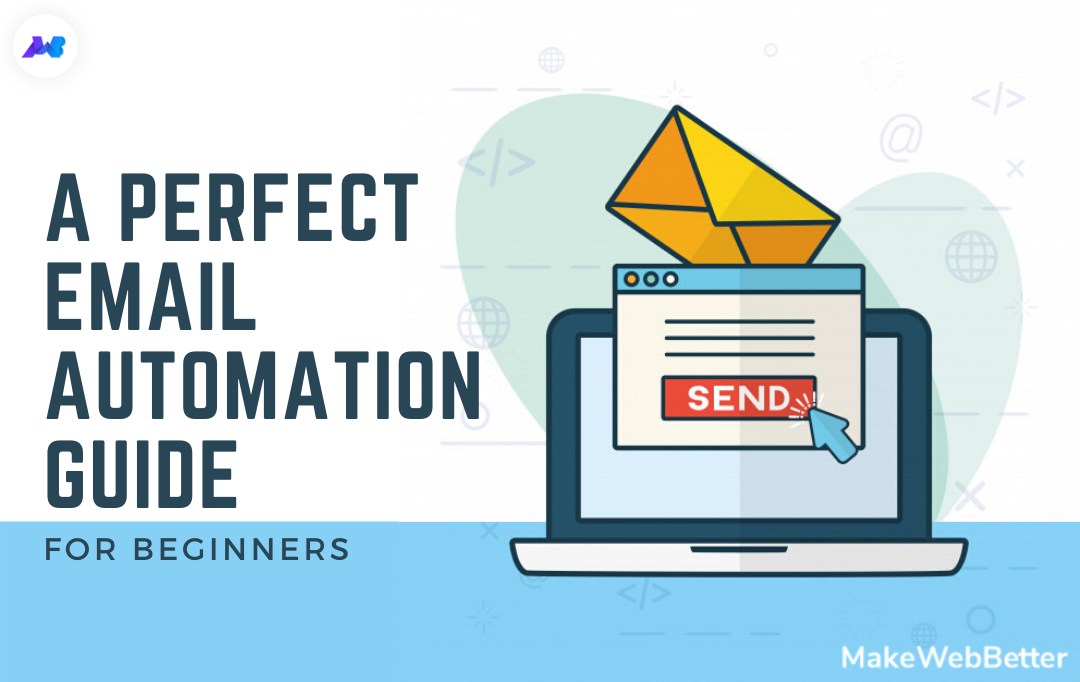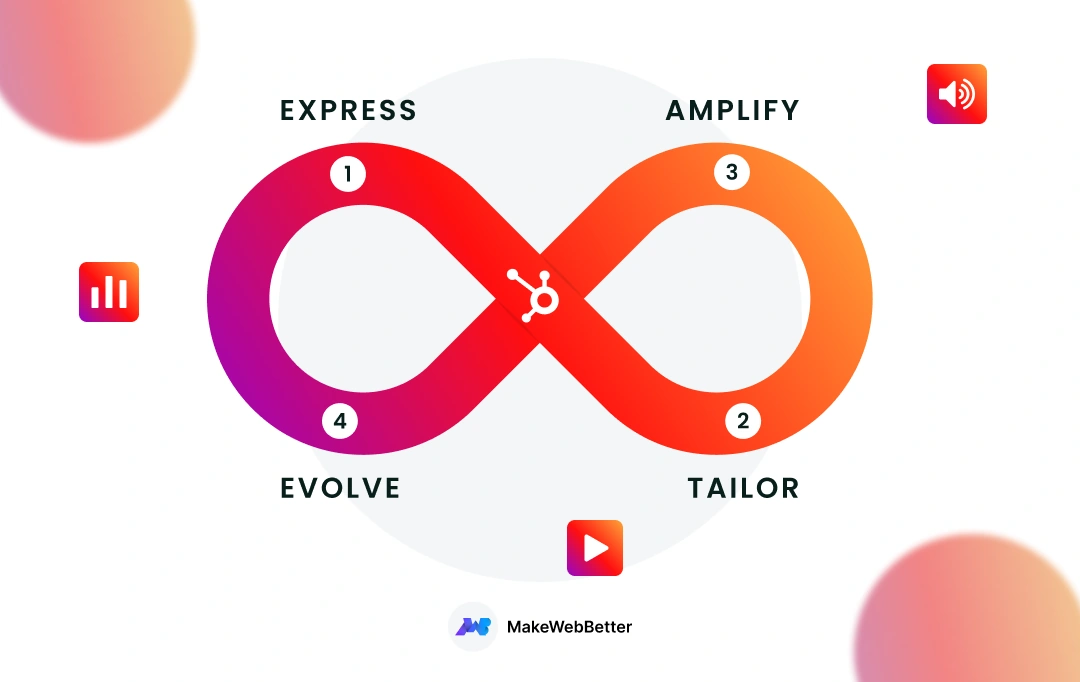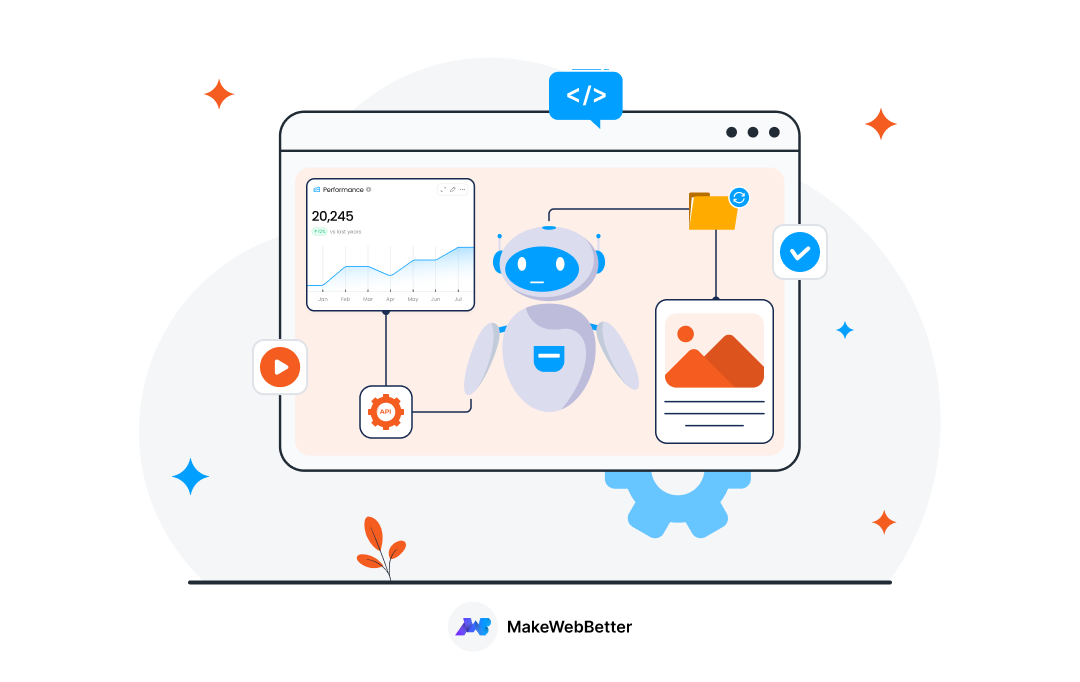Business keeps you busy. It asks you to do many tasks that eat a lot of time. One of those tasks is sending emails. Creating and sending emails to your subscribers manually, if you’ve thousands of them take ages. And even if you do, you’ll not deliver it at the right time to the right person.
Here email automation comes into play. It saves your time you waste on sending emails without diluting the relevancy.
But time saving isn’t the only benefit of email automation. Here are some others:
- Automated emails generate 320% more revenue than to non-automated ones.
- Triggered emails now generate over 75% of all the email revenue.
- Segmented email campaigns generate 760% more revenue.
This email automation guide answers some common questions about email automation. So let’s dive deep into it and learn more.
Table Of Contents
What Is Email Automation?
Email automation or email marketing automation is a technique to send triggered emails automatically to your subscribers. Marketers can create personalized emails that’ll be sent to their audience if they take or don’t take a specific action.
How Email Automation Works?
Email automation allows marketers to create automated email marketing workflows. In these automated workflows, you can add actions, events, conditions. So whenever that set event occurs, the email gets triggered.
For instance, if you want to remind your customers to buy products they added in their cart, you can use email automation. You can create an email that shows the cart products and trigger it if a customer doesn’t purchase it for 2-3 days.
This’ll send an automated email to each customer who hasn’t purchased the product for 2-3 days after adding it in his cart. Hence unburden your reps from approaching with them manually.
If you still don’t get understand, check out this image

Source: Zendesk
Benefits Of Email Automation For Your Business
In the beginning of this article I mentioned some benefits of email automation. Here are some more benefits that cannot be overlooked.
1. Re-engage Lost Customers
You possibly have many existing customers in your email list who don’t buy things anymore from your brand. Email automation helps you here in re-engaging them and bringing them back to your store.
Here’s a perfect email automation example of re-engagement email
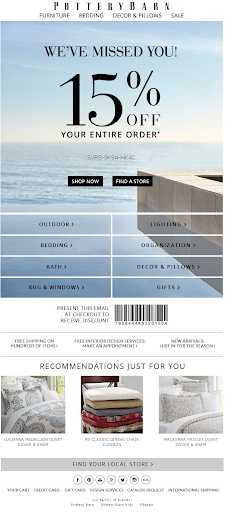
Source: Essenceofemail
You can create a personalized email with some special offers or discount codes. And send those emails to the customers who haven’t bought anything 2, 3, or 6 months. This’ll re-engage those existing customers and bring them back to your store to shop again.
2. Deliver Right Info To The Right People
Email automation allows you to trigger different emails for different events. You can create various events on which you can send a specific email created dedicatedly for that situation.
If you want to greet a new email subscriber for example, you can create a welcome email for that situation. This will deliver a welcome email whenever a user subscribes to your email service.
This increases your relevancy and you should always focus on it. Reports say 55% of customers like emails that have relevant products and offers.
3. Increases Revenue
With email marketing automation, you can create several different campaigns. These email campaigns help you increase the sales, bring customers back, spread word of mouth, etc. which eventually increases your earnings.
Reports say, 70% of carts are abandoned. And this cart abandonment causes $2.75 trillion dollars lost in revenue globally. But the good thing is that this revenue is recoverable. However, recovering each penny of it wouldn’t be possible. But getting back a small share of it will make a huge impact on your revenue.
Emails are one of the most effective marketing channels for abandoned cart recovery. And with email automation, you can automate this process by creating easy cart recovery campaigns. Under these campaigns, you can send users an email that reminds them to complete their purchase.
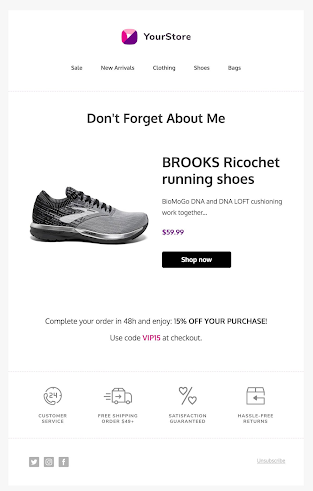
Source: Mailerlite
If you recover only 20% of your abandoned cart, your revenue will boom.
Apart from recovering abandoned carts, you can also create product recommendation emails. These emails can recommend products to the users and persuade them to buy it. And if they make a purchase, you’ll multiply your revenue.
4. Provide A Personalized Customer Experience
If I write every stat on personalized email benefits, this blog may never end. But here are some few and most exciting ones.
- Emails with personalized subject lines have 50% higher open rates.
- Personalized emails have 6x higher transaction rates.
- Personalized, segmented and targeting emails generate 58% of all revenue.
Personalization is something an email automation tool cannot do itself. It can only provide you the arsenal you need to provide personalized experience. But leveraging email automation techniques will help you deliver a personalized experience to your subscribers.
Here’s a short email automation example of personalized email

Source: CampaignMonitor
Many email automation tools come with features like segmentation, tagging, dynamic content etc. You can use these features to bifurcate your existing customers into specific groups and target them accordingly this will provide them a better and more personalized experience.
5. Boosts Click Through Rates
A Goodfirms survey found that boosting CTR is the 3rd biggest email marketing challenge for marketers.
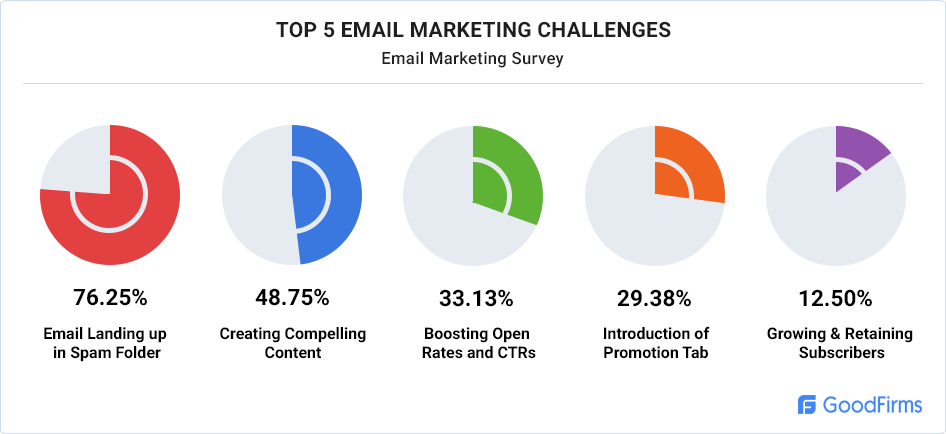
But using email automation helps you perform all the activities that are necessary to increase click through rates. For example, by using an email marketing automation tool, you can segment your customers and deliver them emails they’re want to receive.
These emails arouse the interest and makes users click on those which boosts the click through rate.
Apart from this, many email automation tools let you create catchy email templates. You can personalize these templates, try different CTA hacks, improve its content, format it for easy skimming. These best practices will escalate the click through rate of your emails.
6. Increases Customer Loyalty
Customers don’t deal with the brands who don’t remember them. And even bad, customers choose other brands over them. But it’s impossible to send emails to each subscriber manually in your list.
Here email automation works pretty well. All you have to do is create emails, schedule them for specific events and it will be triggered automatically. This helps you communicate with your customers continuously. And if you do and don’t forget your audience, they won’t forget you which’ll increase the customer loyalty.
7. Helps In Customer Retention

Source: Oberlo
Retaining existing customers is easy with email automation. You segment customers on different criteria, divide them into different groups according to their characteristics, and target them with the content that’s made only for them.
When you execute this successfully you deliver users what they really want. And when they get what they exactly need, they stick to your brand for a long time.
So those were some benefits of email automation for your business. Lets move further in this email automation guide and talk about some important email marketing terms.
Some Crucial Email Automation Terms You Must Know
- Email Service Provider: Email Service Provider(ESP) is a company that provides email marketing services. Brands like Gmail, Yahoo, Outlook, are some of the Email Service Providers.
- Double Opt-in: Also known as confirmed opt-in is a process of confirming to receive emails from a brand after subscribing. In this method, when a user subscribes to a newsletter, a confirmation email is sent to the user to confirm the subscription.
- Email Deliverability: Email Deliverability is the rate of emails that are successfully delivered to your users’ inbox. If an email bounced back or landed in the spam folder of the recipient, it wouldn’t be considered as a successfully delivered email.
- Bounce Rate: Bounce rate depicts the number of emails that weren’t delivered to the recipient and bounced back to you. Simply put, if the recipient’s email server rejects an email and it returns back to you, it’s a bounced email.
- Click Through Rate: Click Through Rate or CTR is the percentage of how many times a link was clicked in a specific email.
- Open Rate: Open rate shows how many of your emails(in a specific campaign) were opened. Sounds simple but the ESP’s don’t consider an email as opened until a link is clicked on the email.
- Email Campaign: It’s a series of emails businesses send to their audience to fulfil a specific goal. For example, if you’re sending emails to recover abandoned carts, that series of emails is an abandoned cart recovery campaign.
- Conversion Rate: Conversion Rate is the percentage of subscribers who took an action in your email campaigns. An action could be anything like clicking on a CTA, purchasing a product, providing a feedback.
- Dynamic Content: Dynamic content is an HTML code that changes according to the end user. For example, email automation tools use dynamic content to display messages like Hello Sam, or Hi Emily.
- Trigger: Trigger describes an event that is triggered to send an email.
- Spam: An action of sending emails to those who don’t subscribe or sending messages with unclear goals.
How To Get Started With Email Automation
1. Create a blueprint: Create a blueprint of your email marketing strategy. This’ll help you identify what email campaigns you need to automate. Or what kind of email marketing strategy you need for better targeting.
2. Select the right ESP: Pick the right ESP that suits your workflow automation needs best. There are many email service providers available. Analyze the market and select the one that best suits your needs.
3. Get your assets ready: Create your personalized emails and automated workflows you’re gonna use in your automated email campaigns. According to your needs and the context of your campaigns, design personalized email templates.
4. Test before sending: Don’t just start your automated email campaign in one go. Once you create your campaigns, test it before sending them to the end users. Test it by sending it to yourself, check the mobile responsiveness, spammyness, etc. to avoid any email marketing mistake. If it works fine, deliver it to the users.
5. Analyze, Optimize and repeat: You shouldn’t stop after delivering your emails. After sending your emails, track the performance of your email campaigns. Analyze which one is performing which one’s not, optimize both and repeat the cycle.
Best Email Marketing Automation Tools
Here are some best email marketing automation tools you can try if you’re heading towards email marketing automation.
- Sendinblue: It starts with a free plan that lets you send 300 emails per day.
- Constant Contact: It provides 3 different plans that are priced 5, 20 and 45 dollars. First month for each plan is free.
- Mailchimp: Its free plan allows you to send 10000 monthly emails.
- GetResponse: It starts with a $15 monthly plan and each plan comes with a free trial.
- Optinmonster: The plans start from 9 dollars per month and go to 49 dollars. But if you don’t like the tool, you can ask for a refund within 14 days.
- CampaignMonitor: It comes with a customizable pricing where the price changes as per the number of the recipients. But the basic plan starts with 9/month. Yet you can also try it for free.
- HubSpot: The plan starts from $50/month but you can use the HubSpot CRM for free.
- Mailjet: Their pricing depends on the number of emails you want to send per month. But you can try it’s free and non-expiring plan. It lets you send 6000 emails each month.
Final Thoughts
You’ll find plenty of articles on the web saying emails are dead but a 2020 report from Custora doesn’t agree with this. It says emails are still responsible for 19.8% of all transactions. That is 3rd highest after paid search(19.9%) and organic traffic(21.8%). This shows emails are still one of the most effective marketing channels.
So if you also want to witness these results, all you need to do is, follow the above steps I mentioned in this email automation guide. A quick summary of those steps:
- Pick the right Email Service Provider
- Create personalized emails
- Test your campaigns
- Send and track the results
- Optimize and repeat
I hope this email automation guide gave you what you clicked for. If you’ve any question or suggestion, feel free to write it in the comments box.

